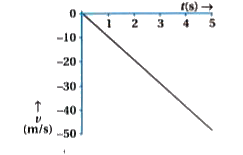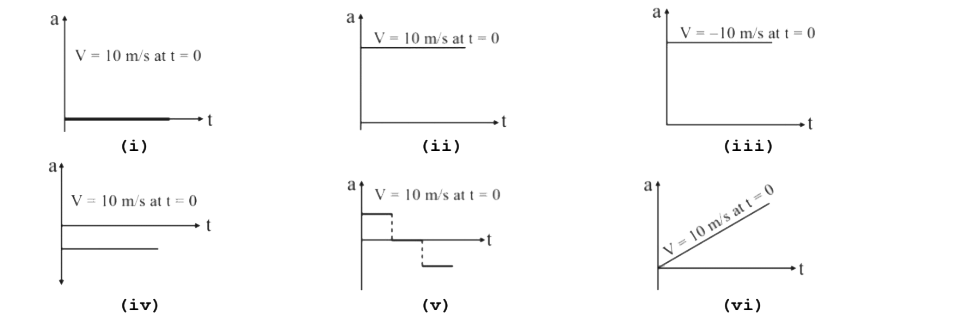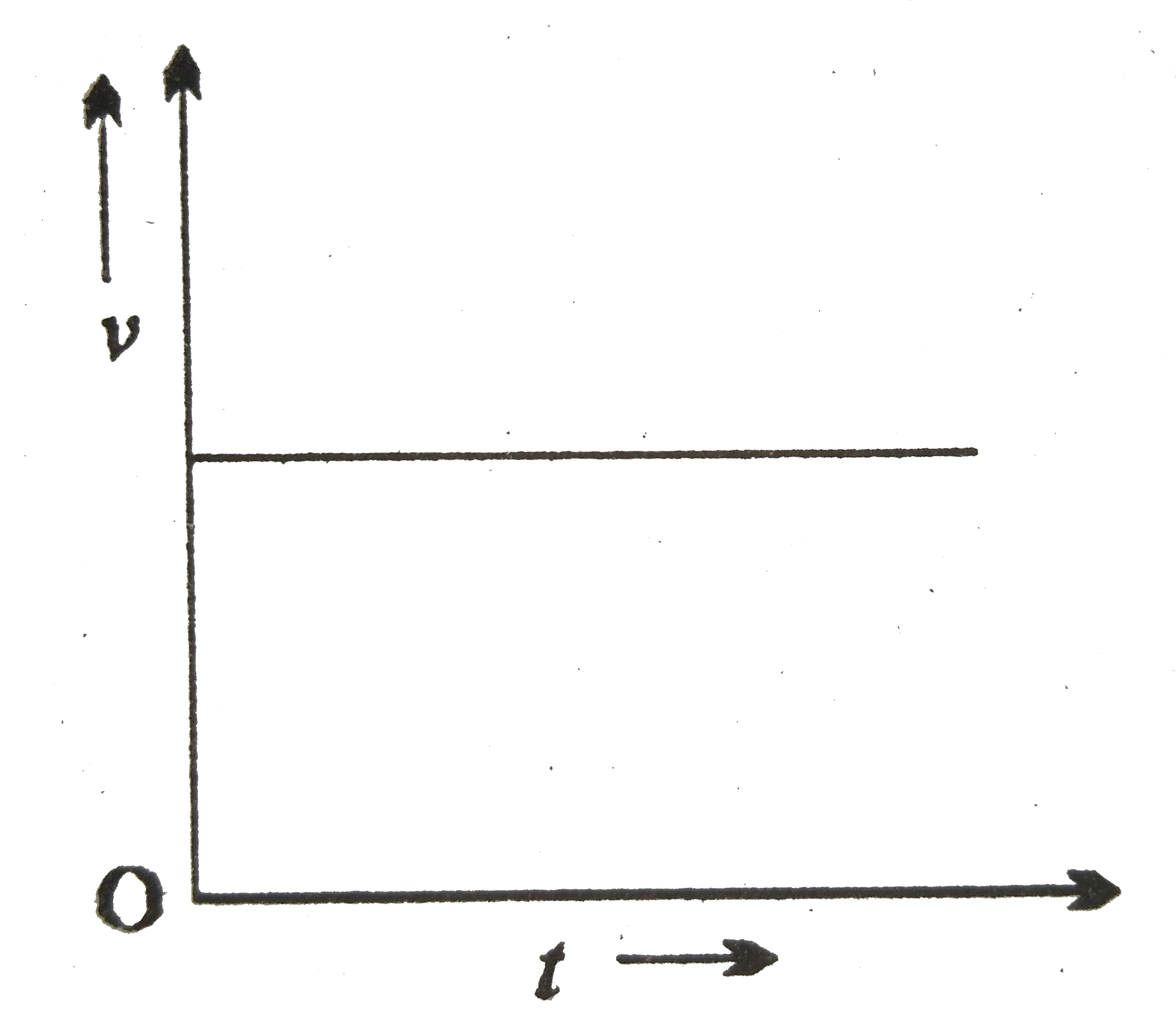Draw graphs a→t,v→tandx→t for the object falling freely. Solution in Gujrati

For object falling freely, acceleration is constant and equation to negative g. Thus, graph (a) shows the change in acceleration with respect to time (a→t).

Velcity of object falling freely, v=−gt. THus, graph (b) is obtained for v→t.

For object falling freely, h=12gt2. Thus graph (c) is obtained for x→t.
Topper's Solved these Questions
- MOTION IN A STRAIGHT LINE BOOK - KUMAR PRAKASHANCHAPTER - MOTION IN A STRAIGHT LINE EXERCISE - SECTION-A TRY YOUR SELF (VSQs)
52 Videos
- MOTION IN A STRAIGHT LINE BOOK - KUMAR PRAKASHANCHAPTER - MOTION IN A STRAIGHT LINE EXERCISE - SECTION-B
58 Videos
- MECHANICAL PROPERTIES OF FLUIDS BOOK - KUMAR PRAKASHANCHAPTER - MECHANICAL PROPERTIES OF FLUIDS EXERCISE - QUESTION PAPER (SECTION -C)
3 Videos
- OBJECTIVE QUESTIONS AS PER NEW PAPER STYLE BOOK - KUMAR PRAKASHANCHAPTER - OBJECTIVE QUESTIONS AS PER NEW PAPER STYLE EXERCISE - CHAPTER - 8 (Match Type questions)
5 Videos
Similar Questions
How can we determine whether the object is in rest or not?
View SolutionA car is moving along a straight line, say OP in It move from O to P in 18 s and returns from P to Q in 6s, where OP=360 m and OQ=240 m. What are the average velocity and average speed of the car in going (a) from O to P ? And (b) from O to P and back to Q ?
View SolutionGlycerine flows steadily through a horizontal tube of length 1.5m and radius 1.0 cm . If the amount of glycerine collected per second at one is 4.0×10−3kgs−1 , what is the pressure difference between the two ends of the tube ? (Density of glycerine =1.3×10103kgm−3 and viscosity of glycerine =0.83 Pa s). [ you may also like to check if the assumption of laminar flow in the tube is correct]
View SolutionType of satellites are given in Column-I and their uses are given in Column-II. Match them properly :
Column-IColumn-II(1) Polar satellite(a) Tele communication(2) Geo-stationary satellite(b) Investigation(c) For information about atmosphere
View SolutionDraw the x-t graph of an object in uniform motion.
View SolutionIn the given x - t graph. Find the position of an object at t = 3 second

View SolutionRepresent the following v - t graph on a a - t graph.
View SolutionRepresent the following a-t graph on a v-t graph.
View SolutionWhat is v-t graph? Derive the expression x = V_0 t + 1//2 at^2 using v-t graph.
View SolutionDraw the v-t graphs for the given a-t graphs for a particle moving in one dimension.

View Solutionसंलग्न चित्र में विरामावस्था से एक गतिमान पिंड के लिए a−t ग्राफ प्रदर्शित किया गया है। उस पिंड के लिए
(i) v−t ग्राफ तथा (ii ) x−t ग्राफ खींचिये।

View Solutionसंलग्न चित्र में गतिमान वस्तु के लिए v−t ग्राफ प्रदर्शित किया गया है । वस्तु का त्वरण क्या होगा? वस्तु की गति के लिए x−t ग्राफ खींचिए ।

View SolutionDraw v to t graph for constant velocity and explain it.
View SolutionExplain by drawing graphs of displacement x(t)→t, velocity v(t)→t and acceleration a(t)→t of SHM for initial phase zero.
View SolutionCorresponding to (p - T) graph as shown in figure, draw (a) P - V graph (b) V - T graph ( c) rho - T graph and (d) U - T graph.
View Solution
